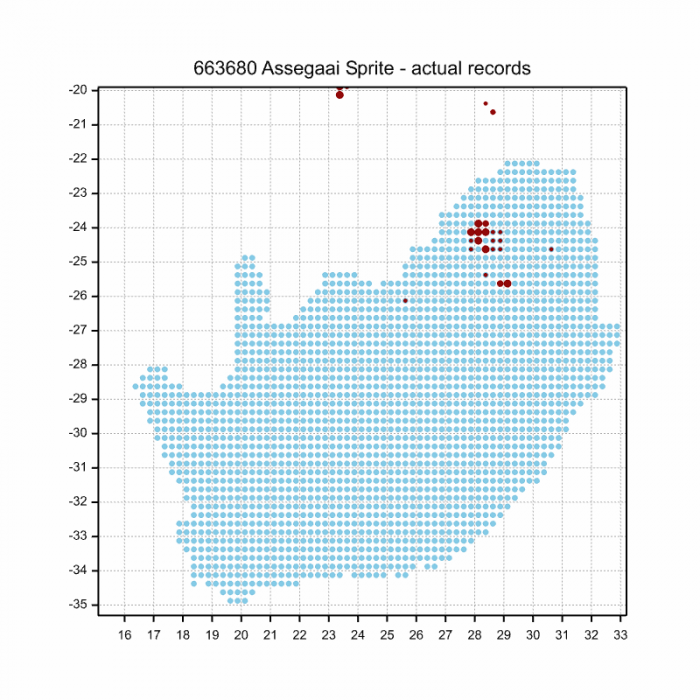View the above photo record (by Evert Kleynhans) in OdonataMAP here.
Find the Assegai Sprite in the FBIS database (Freshwater Biodiversity Information System) here.
Family Coenagrionidae
Pseudagrion assegaii – ASSEGAI SPRITE
Identification
Small size
Length up to 34mm; Wingspan reaches 42mm.
Most similar to Pseudagrion coeleste (Catshead Sprite) and Africallagma glaucum (Swamp Bluet).
Differentiated from Pseudagrion coeleste by being smaller and bluer. The Assegai Sprite lacks the hints of green on the thorax and eyes of the Catshead Sprite. Most importantly the two species differ in the shape of the black marking on the second abdomen segment. Pseudagrion assegaii shows a spear or assegai-shaped marking, whereas Pseudagrion coeleste has a marking that resembles the head of a cat.
Told apart from Africallagma glaucum by being slightly larger and by having large, unconnected postocular spots. They can be further differentiated by the shape of the claspers.
Click here for more details on identification.

Linyanti, Botswana
Photo by Ryan Tippett
Habitat
Inhabits still water habitats with emergent and floating vegetation such as sedge and waterlilies. Favours the fringes of natural habitats like lakes, pans and floodplains, but will also utilise suitable man-made dams.
Behaviour
Perches close to the water on emergent plant stems. Especially fond of resting on waterlily leaves.
On the wing from August to March (see Phenology below).
Status and Conservation
Locally common. Listed as of Least Concern in the IUCN Red List of Threatened Species.
Distribution
Pseudagrion assegaii has a very disjunct distribution in Southern and East Africa. Ranges from northern South Africa to Botswana, Zimbabwe, Zambia and Uganda.
In South Africa the Assegai Sprite is recorded from the Limpopo, Gauteng and North-West provices. Most numerous in the western parts of Limpopo.
Below is a map showing the distribution of records for Assegai Sprite in the OdonataMAP database as at February 2020.

The next map below is an imputed map, produced by an interpolation algorithm, which attempts to generate a full distribution map from the partial information in the map above. This map will be improved by the submission of records to the OdonataMAP section of the Virtual Museum.


Ultimately, we will produce a series of maps for all the odonata species in the region. The current algorithm is a new algorithm. The objective is mainly to produce “smoothed” maps that could go into a field guide for odonata. This basic version of the algorithm (as mapped above) does not make use of “explanatory variables” (e.g. altitude, terrain roughness, presence of freshwater — we will be producing maps that take these variables into account soon). Currently, it only makes use of the OdonataMAP records for the species being mapped, as well as all the other records of all other species. The basic maps are “optimistic” and will generally show ranges to be larger than what they probably are.
These maps use the data in the OdonataMAP section of the Virtual Museum, and also the database assembled by the previous JRS funded project, which was led by Professor Michael Samways and Dr KD Dijkstra.
Phenology



